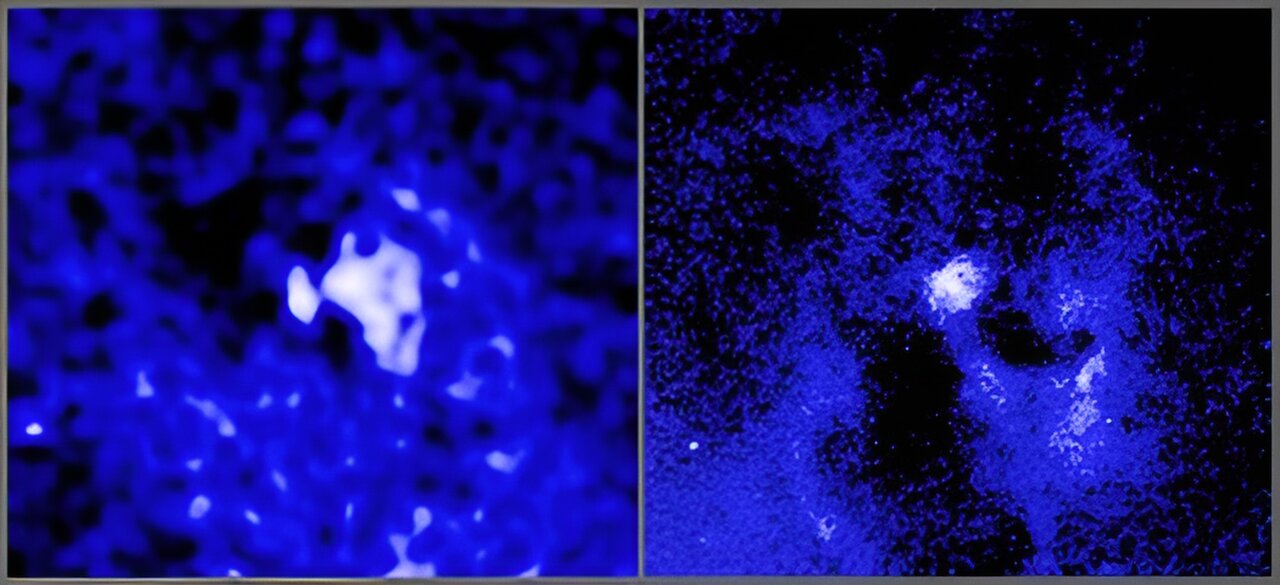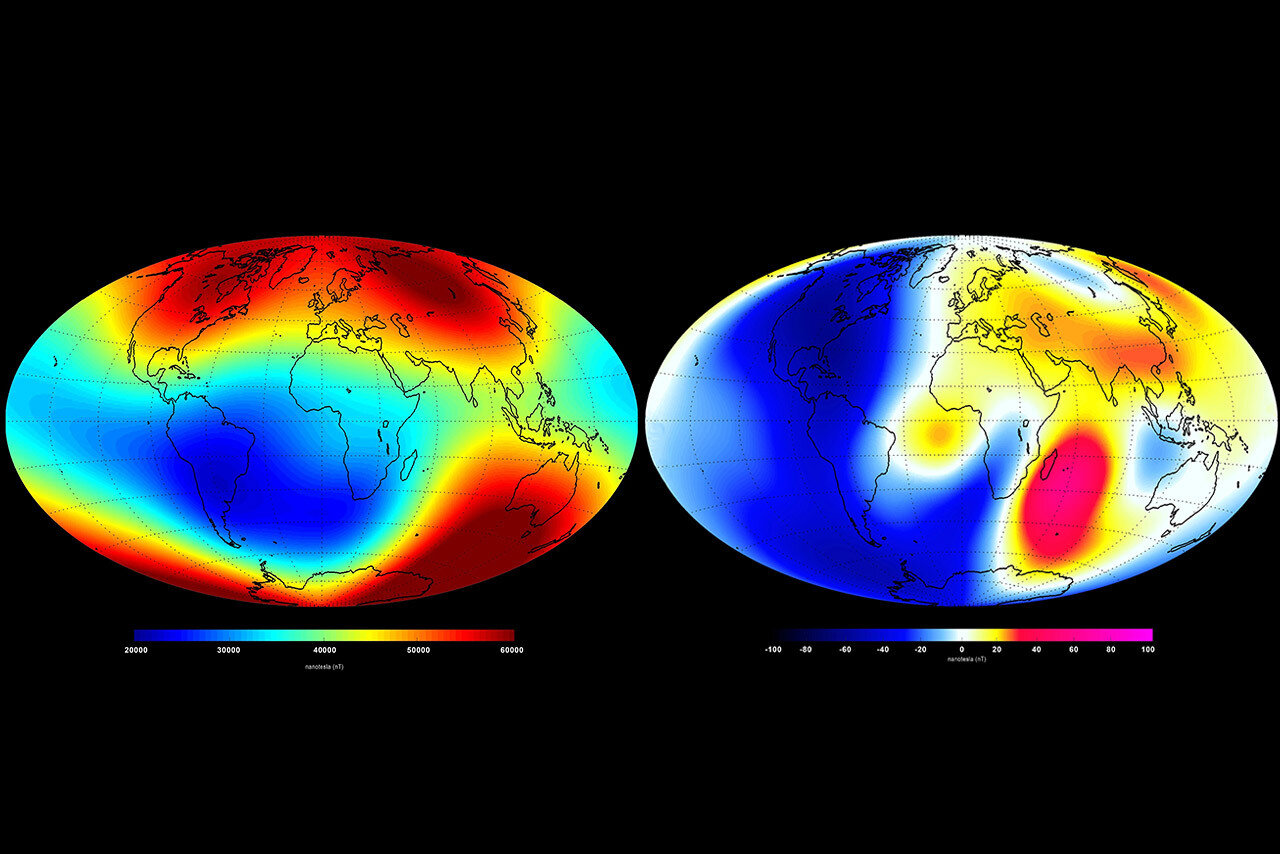Black holes shoot beams of particles and change targets over time
An image from the Chandra X-ray and VLBA radio dataset of black hole jets with “voids” surrounding it. Credit: X-ray: NASA/CXC/Univ. from Bologna/F. Ubertos; Inset Radio: NSF/NRAO/VLBA; Image processing: NASA/CXC/SAO/N. Wolk
x close
An image from the Chandra X-ray and VLBA radio dataset of black hole jets with “voids” surrounding it. Credit: X-ray: NASA/CXC/Univ. from Bologna/F. Ubertos; Inset Radio: NSF/NRAO/VLBA; Image processing: NASA/CXC/SAO/N. Wolk
Black holes seem to provide an endless fascination for astronomers. This is at least partly due to the extreme physics going on in and around them, but sometimes it can go back to the cultural touchpoints that got them interested in astronomy in the first place.
This appears to be the case for the authors of a new paper published in The Astrophysical Journal on the movement of jets coming out of black holes. Calling them “Death Star” black holes, scientists used data from the Very Long Baseline Array (VLBA) and the Chandra X-ray Observatory to determine where these black holes shot jets of superheated particles. And as time went on, they discovered that they did something that even the fictional Death Star could do – shift.
The black holes at the center of the study were supermassive at the centers of galaxies. Importantly, they were all surrounded by hot gases that were visible to Chandra’s X-ray sensors. The jets themselves were clearly visible in the data, but there was other important information hidden in them—namely, pockets of no gas that the jets pushed away.
Each black hole has jets of particles in two opposite directions. As these jets push away gas and dust, they open up a pocket of space surrounding the black hole. These are visible in the X-ray data due to the lack of signal from these regions. The researchers hypothesized that the jets should be aligned with the pockets of free space they create.
But they found that in at least six of the 16 black holes they studied, the jets had completely changed direction, so that the pockets of missing gas were no longer aligned with the jets currently emitted from the black hole. In some cases, these changes added up to a 90-degree shift in the direction the jets were pointing.
More impressively, they appeared to move on a relatively small time scale, with estimates ranging from 1 to 10 million years. That’s the blink of an eye for a black hole over 10 billion years old.
So why is it important? Cosmologists believe that these disruptive jets set an upper limit on the number of stars that form in the black hole’s host galaxy. They don’t let the gas and dust surrounding them cool enough to start forming stars and rocky planets.
So while it is unclear whether the particle jets themselves are roasting any formed planets like the actual Death Star, it is clear that the movement of the jets would cause even more massive disruption to the star formation process. In theory, this would mean that galaxies containing these moving jets would have fewer stars, but that’s a study for another article.
Understanding exactly why this happens may also need to be explored in another paper, but the authors have several theories. Matter orbiting and falling into a black hole could cause the black hole to spin, causing the jets it emits to move with it.
Another explanation is that the gas moves around the galaxy without being hit by the rays. Essentially, “voids” of no gas in a galaxy are remnants of other cosmological forces and have nothing to do with black hole jets.
However, the authors think this is unlikely because galaxy mergers, which could be one source of causing the “peeling”, occurred in galaxies that had moving beams and in galaxies that did not. One would expect voids to be present in both types if they were caused by galaxy mergers rather than moving particle jets.
As always, more science needs to be done. Thanks to the wonderful world of video streaming, a whole generation of new scientists inspired by the same Death Star have been able to do just that.
More information:
Francesco Ubertosi et al, Jet Reorientation in Central Galaxies of Clusters and Groups: Insights from VLBA and Chandra Data, The Astrophysical Journal (2024). DOI: 10.3847/1538-4357/ad11d8
Information from the diary:
Astrophysical Journal














Post Comment